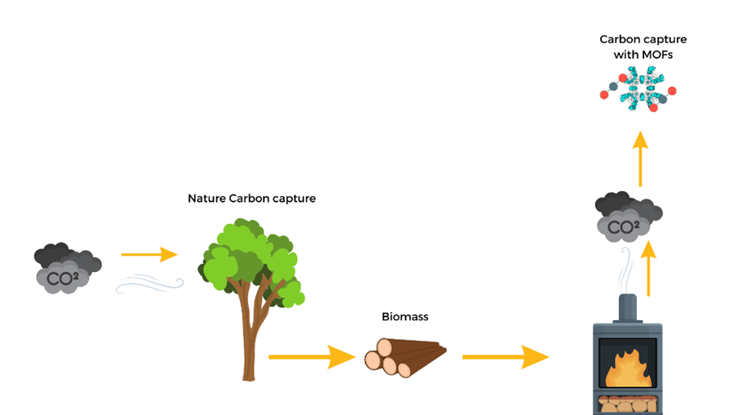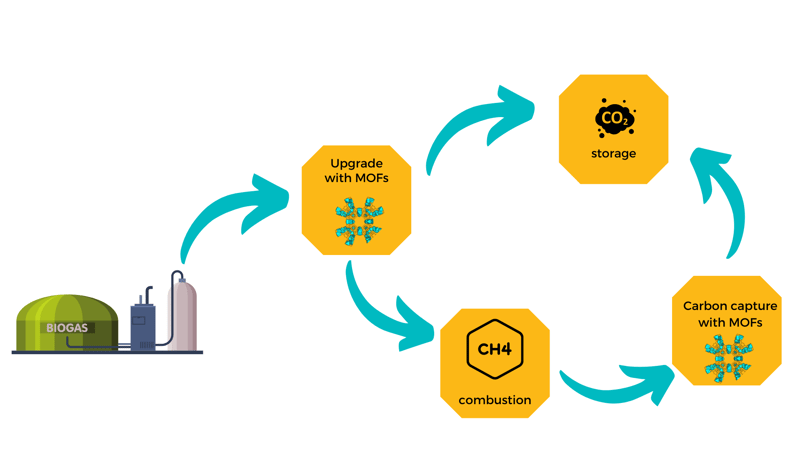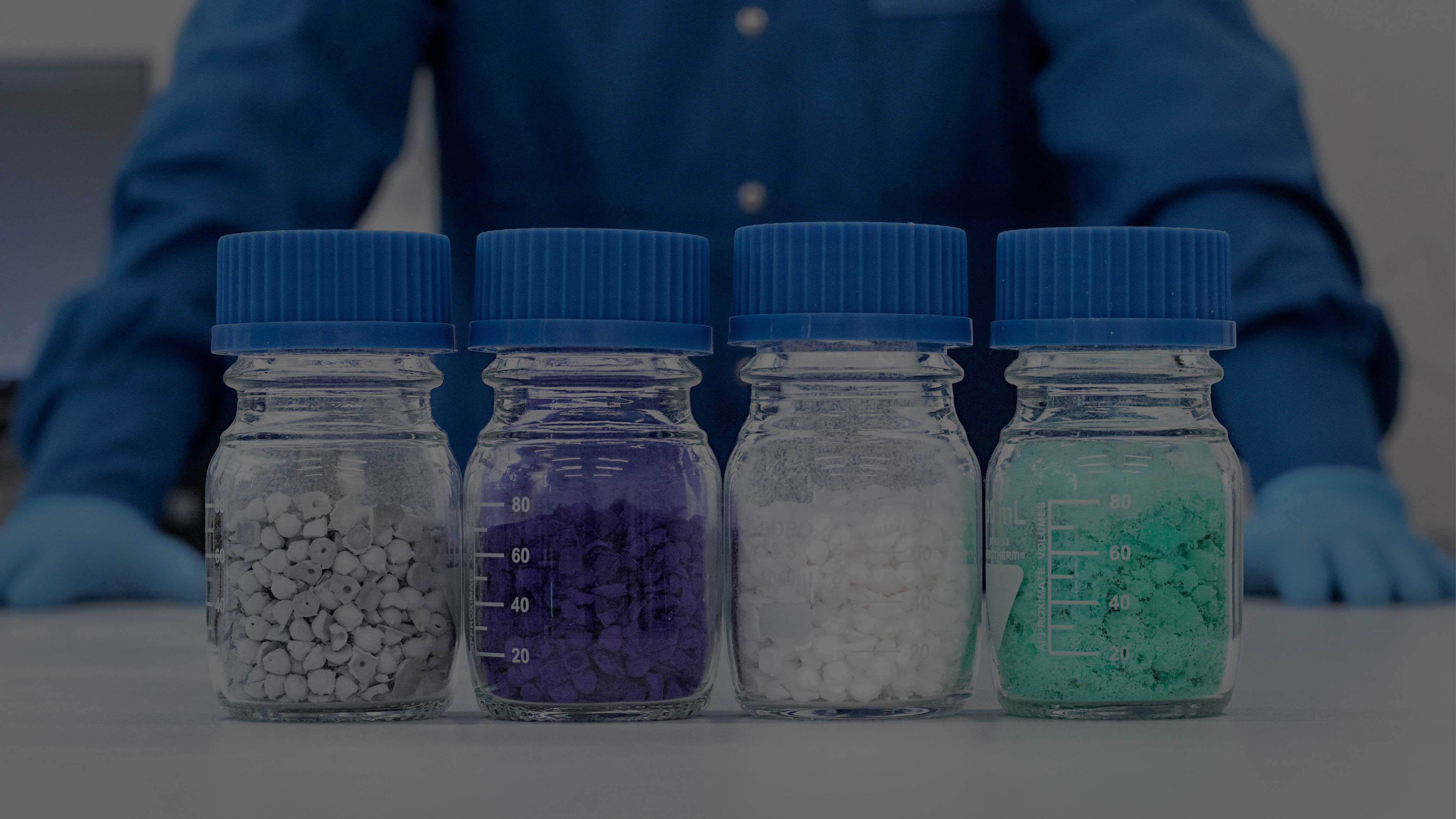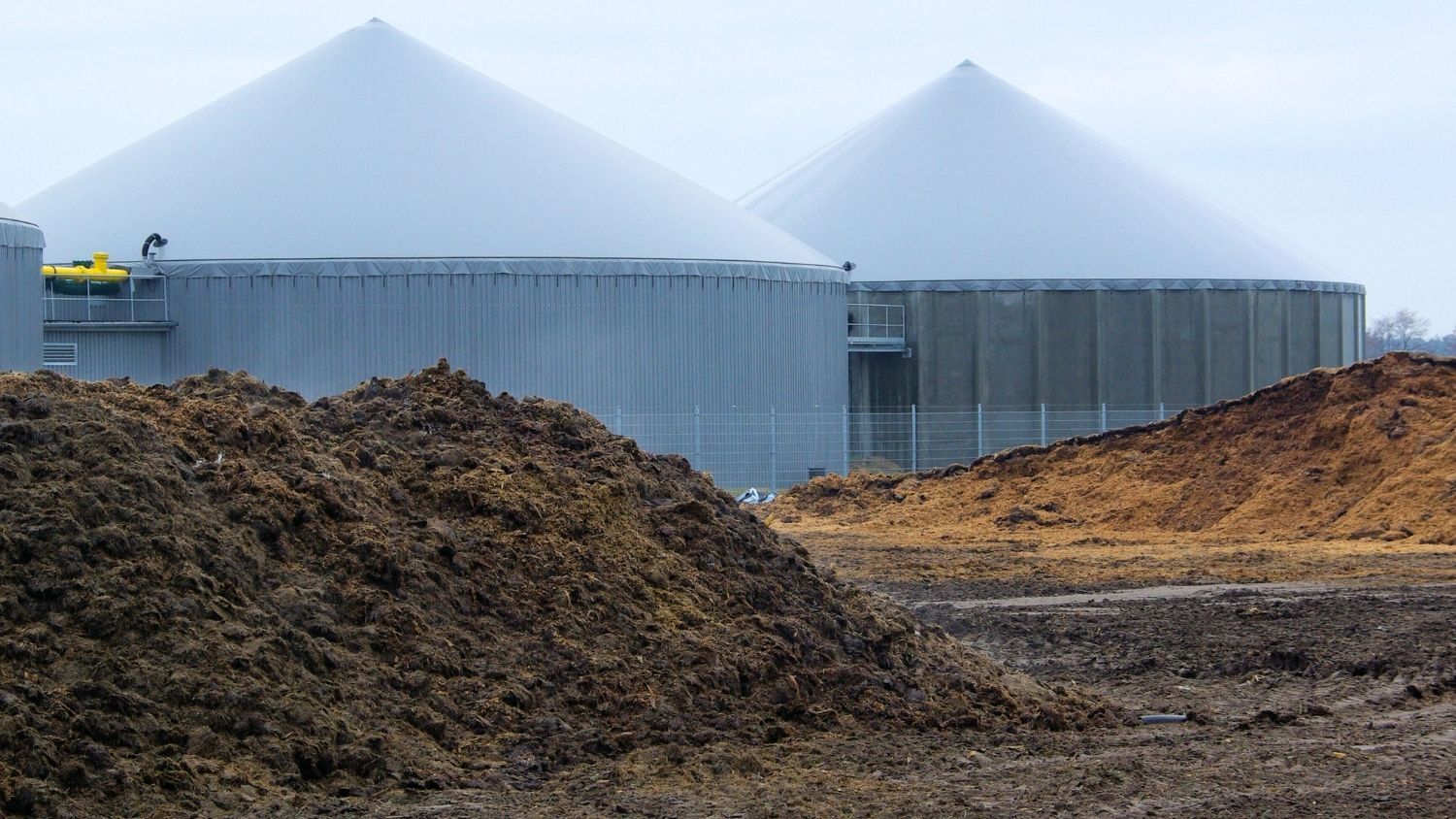Carbon-negative processes are crucial for achieving carbon neutrality goals to mitigate climate change. Several carbon capture technologies exist to capture carbon dioxide (CO2) emissions from sources such as power plants, industrial facilities, and even directly from the atmosphere. Implementing carbon capture technologies to existing processes would make removing carbon dioxide possible to achieve a carbon-negative status. Here, we will show how solid porous materials offer solutions for carbon capture in existing facilities.
What are carbon-negative solutions?
Carbon-negative solutions integrate methods and technologies that remove more carbon dioxide from the atmosphere than is released in a process. This means there is a CO2 generation process, typically related to combustion and a subsequent carbon capture step. Achieving a carbon-negative status implies that the net carbon dioxide balance should be favored in the removal process.
Achieving the carbon-negative balance
The carbon capture step is crucial when designing a carbon-negative solution, and some features like capture efficiency and energy efficiency must be considered. Among carbon capture technologies, amine scrubbing, calcium looping, and adsorption-based methods stand out due to their high capture efficiency. However, amine scrubbing and calcium looping are energy-intensive processes which lead to them being unsuitable for a carbon-negative solution. Alternatively, adsorption-based carbon capture using porous solid materials is a promising technology.
Different porous solid materials, such as zeolites, carbon-based materials, and Metal-Organic Frameworks (MOFs) can be used for the carbon capture step in adsorption-based technologies. Among these materials, MOFs are the most novel materials that have shown outstanding carbon capture results even under adverse conditions typically found in flue gas streams, including high humidity levels and low CO2 partial pressure.

Carbon-negative solutions using MOFs
MOFs have applications in several carbon removal strategies, including Carbon Capture and Storage (CCS), Direct Air Capture (DAC), Carbon Utilization (CCU), and Carbon Conversion (CCC). Implementing MOF technology in such strategies can include more than one step.
One example of a carbon-negative strategy is Bioenergy with Carbon Capture and Storage (BECCS). BECCS combines bioenergy production with carbon capture and storage. Biomass is burned for heat and electricity production. The CO2 released is captured and stored, resulting in a net removal of CO2 from the atmosphere.
Research and development in carbon-negative technologies drive innovation and create new opportunities for sustainable economic growth. MOFs will help to face challenges, including technological feasibility, scalability, and cost-effectiveness.
For instance, MOFs can be used for biogas upgrading, the primary goal of which is to remove impurities, such as carbon dioxide (20-40%) and trace contaminants from the raw biogas. Removing a significant portion of CO2 from the biogas mixture increases the methane content, improving the calorific value. In this step, MOFs offer advantages like simple operation, low energy consumption, and ease of scalability due to their superior selectivity and stability when used in membrane technology.
 While biogas power generation offers a greener energy option, the process is not entirely without carbon emissions. Carbon dioxide is released into the atmosphere during combustion. In this step, MOFs can be implemented for post-combustion carbon capture from the flue gases of the power plant. The flue gases are treated to remove carbon dioxide before release, reducing the carbon footprint of the plant significantly. MOFs offer enhanced stability, good selectivity, and lower energy requirements compared to absorption technologies.
While biogas power generation offers a greener energy option, the process is not entirely without carbon emissions. Carbon dioxide is released into the atmosphere during combustion. In this step, MOFs can be implemented for post-combustion carbon capture from the flue gases of the power plant. The flue gases are treated to remove carbon dioxide before release, reducing the carbon footprint of the plant significantly. MOFs offer enhanced stability, good selectivity, and lower energy requirements compared to absorption technologies.
Implementing multiple carbon capture steps using MOFs can favor the carbon dioxide balance to a negative balance. After the carbon dioxide is captured and stored in MOFs, it can be released for its conversion into value-added chemicals or fuels, closing the carbon loop for sustainability and enabling the circular economy of carbon capture.
The advantages of MOFs come from their unique chemical structure. Different features can be controlled during their synthesis, including pore size, channel topology, and surface chemical reactivity, enhancing their robustness and thermal and chemical stability. Among carbon capture technologies, MOF-based technologies can deliver a sustainable and economical solution to achieve carbon-negative processes.
If you have an interest in MOFs, including their design and synthesis, feel free to reach out to us. We're here to assist you in finding the optimal solution for your needs.




.jpg)
